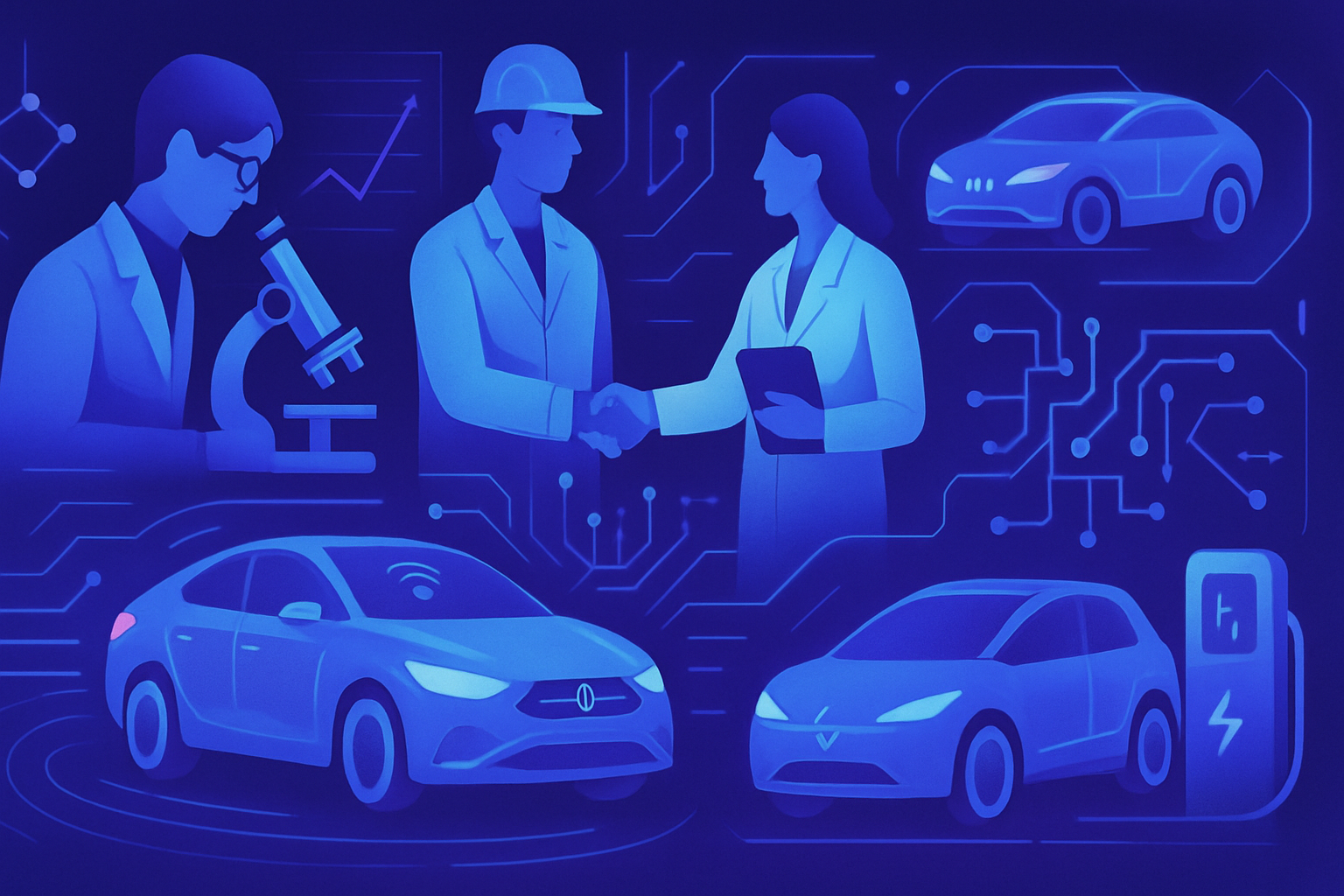Celebrating the synergy between the academic world and the automotive industry transcends mere exchanges of ideas. This collaboration enhances technological advances and addresses contemporary challenges. Uniting forces shapes the future of the automobile with innovative solutions.
Safety and transparency are fundamental issues. The rapid evolution of assisted and automated driving technologies necessitates a collective reflection. Reinforcing consumer trust becomes essential. Standardizing practices ensures the harmonization of safety standards. The sustainability of vehicles represents a major challenge for the future. Navigating towards automotive ecology requires innovative strategies, the result of a coherent partnership between research and industry.
Let’s celebrate the tenth anniversary of the AVT Consortium
On May 6, the MIT AgeLab marked a decade of collaboration between the academic world and industry with its celebration of the tenth anniversary of the Advanced Vehicle Technology (AVT) Consortium. This initiative, rooted in the MIT Center for Transportation and Logistics, aims to create relevant data to better understand the evolution of driver behaviors in light of technological advances in vehicles.
Objectives and achievements of the AVT Consortium
The AVT was designed to deepen the understanding of the interactions between drivers and assisted and automated driving technologies. Over the past ten years, the consortium has amassed hundreds of terabytes of data and collaborated with over 25 member organizations. This fruitful dialogue has fostered strategic and policy initiatives while allowing for the publication of significant results.
Crucial themes addressed during the celebration
The celebration brought together various industry players around several important topics. Discussions related to artificial intelligence, automotive technology, vehicle safety, and sustainability captured participants’ attention. Bryan Reimer, co-director of the consortium, emphasized the contemporary challenges regarding driver attention, consumer distrust towards certain technologies, and high expectations for safety and affordability.
Regulation and sector collaboration
During a discussion on automotive safety regulation, John Bozzella and Mark Rosekind called for an evolution in regulations. Their proposal: adopt a data-driven approach that promotes collaboration between industry and government. They presented voluntary commitments on automatic emergency braking as a model to follow for future advancements.
The challenges related to automated driving systems
With increasing interest in assisted and automated driving systems, industry players face challenges. Companies like Ford and Volkswagen are revising their plans for full autonomy, now focusing on level 2 and 3 technologies. Consumer confusion, particularly regarding distinctions between L2 and L2+, persists and remains concerning.
The impact of artificial intelligence on the automobile
Discussions on the impact of artificial intelligence were also enlightening. Mauricio Muñoz, senior research engineer at AI Sweden, clarified that the automotive industry cannot rely solely on general trends. Genuine progress requires a deep understanding of the automotive context, coupled with significant investments in targeted research.
Repair and associated costs of new technologies
A panel on automotive repair highlighted the unintended consequences of technological advances. Repair costs, often high due to the complexity of sensor recalibrations, pose a real problem for consumers. Speakers advocated for increased standardization and better consumer education regarding automotive technologies.
Future visions for the automotive industry
Companies like Honda are setting bold ambitions regarding sustainability. Ryan Harty asserted that Honda aims for zero environmental impact and takes risks regarding road safety while moving towards fully electric production by 2040. Manufacturers are looking to align with consumer needs and environmental responsibility.
Collaboration and standardization as keys to the future
Discussions on regulatory modernization and evolving consumer expectations also resonate with crucial industrial issues. The need to design systems for proactive safety is clearly evident. The lack of integration of digital infrastructure presents limitations on both technical and regulatory levels.
Reconciliating consumer trust and innovation
The economic challenges related to future mobility are emerging. The necessity to rebuild consumer trust proves essential in the face of rising ownership costs. Reimer stressed the importance of global collaboration to achieve transparent and comprehensible innovation for consumers. The way forward will involve shared investments and a cultural shift within the industry.
Help section
What is the importance of collaboration between the academic world and industry for automotive innovation?
Collaboration allows combining theoretical research and the practical needs of the industry, leading to innovative and effective solutions that address contemporary challenges in the automotive sector.
How does the MIT AgeLab contribute to this collaboration?
The MIT AgeLab, through its Advanced Vehicle Technology Consortium, collects critical data and collaborates with industry members to enhance understanding of driver behaviors towards new automotive technologies.
What types of data are collected to advance automotive technology?
Hundreds of terabytes of data are collected, encompassing driving behaviors, reactions to assistance and automated driving systems, as well as information on safety and consumer expectations.
What are the main issues addressed during these collaborations?
Issues include vehicle safety, consumer trust towards new technologies, environmental impact, as well as expectations regarding innovation and financial accessibility.
How can companies get involved in this collaboration?
Companies can join consortiums like the AVT, participate in collaborative research initiatives, and invest in projects that promote data sharing and innovation in safety and sustainability.
What role does regulation play in the evolution of automotive technology?
Regulation must adapt and evolve with technological advances to ensure that innovations are implemented safely and beneficially for society while also facilitating proactive safety initiatives.
What challenges do companies face when implementing advanced technologies?
Challenges include the complexity of repairs, high costs of technologies, the need for repairability standards, and consumer distrust towards these innovations.
Why is it crucial to form partnerships between the academic and industrial sectors?
These partnerships are essential to align innovation goals, share knowledge and resources, and accelerate the development of technologies that meet market needs while integrating social and environmental considerations.






